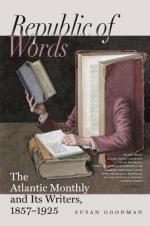These observations are not intended to bear, except remotely, upon the question, Which is the true Dramatic Art, the romantic or the ancient? We shall not venture into that land of drought, where dry minds forever wander. We can admit both schools. In fact, even the countrymen of Racine have long since admitted both,—speculatively, at least,—though practically their temperament will always confine them to artificial models. We may consider the question as set at rest in these words of M. Guizot:—“Everything which men acknowledge as beautiful in Art owes its effect to certain combinations, of which our reason can always detect the secret when our emotions have attested its power. The science—or the employment of these combinations—constitutes what we call Art. Shakspeare had his own. We must detect it in his works, and examine the means he employs and the results he aims at.” Although we should be far from admitting so general a definition of Art as this, yet it is sufficient as an answer to the admirers of the purely classic school.
But it has become necessary in this “spasmodic” day to vindicate our great poet from the supposition of having written in a state of somnambulism,—to show that he was even an artist, without reference to schools. The scope of our observations is to exhibit him in that light; we wish to insist that he was a man of forethought,—that, though possessing creative genius, he did not dive recklessly into the sea of his fancy without knowing its depth, and ready to grasp every pebble for a pearl-shell; we wish to show that he was not what has been called, in the cant of a class who mistake lawlessness for liberty, an “earnest creature,”—that he was not “fancy’s child” in any other sense than as having in his power a beautifully suggestive fancy, and that he “warbled his native wood-notes wild” in no other meaning than as Milton warbled his organ-notes,—namely, through the exercise of conscious Art, of Art that displayed itself not only in the broad outlines of his works, but in their every character and shade of color. With this purpose we have urged that he was “natural” from taste and choice,—artistically natural. To illustrate the point, let us consider his Art alone in a few passages.
We will suppose, preliminarily, however, that we are largely interested in the Globe Theatre, and that, in order to keep it up and continue to draw good houses, we must write a new piece,—that, last salary-day, we fell short, and were obliged to borrow twenty pounds of my Lord Southampton to pay our actors. Something must be done. We look into our old books and endeavor to find a plot out of ancient story, in the same manner that Sir Hugh Evans would hunt for a text for a sermon. At length one occurs that pleases our fancy; we revolve it over and over in our mind,—and at last, after some days’ thought, elaborate from it the plot of a play,—“Timon of Athens,”—which plot we




